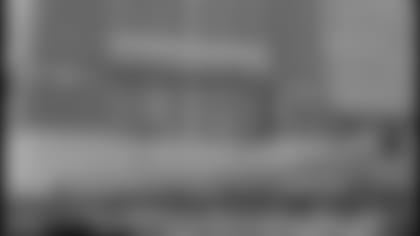As the Green Bay Packers look back on the 2004 fiscal year, which included the 2003 football season and concluded March 31, there is much to be proud of.
There's the organization's position in the NFL revenue rankings -- 10th for the second straight year, after being 20th as recently as 2002. There's the outstanding performance of the Lambeau Field Atrium businesses, which generated $3.1 million in revenue in less than a year of operation. And there's the $5.3 million increase in after-tax operating profit compared to 2003.
And yet for all the ways the Packers exceeded even their own business expectations over the past year, the organization's most significant obstacle has yet to be overcome.
This week, the Packers will distribute to their shareholders the annual report of the 2004 fiscal year, which will detail that the team's corporate reserve fund -- the equivalent of an organizational rainy day fund -- has grown from $58 million in the 2003 fiscal year to $84.5 million in the 2004 fiscal year just ended.
But in the meantime, the cost of football operations -- everything from players' and coaches' salaries to scouting, team travel, medical and equipment costs -- has increased as well, from $93.3 million in 2003 to $113 million in 2004, leaving the Packers still well short of the mountaintop they someday hope to reach.
"Did we make our goal?" corporate treasurer John Underwood asked. "No. We've said that we wanted to build our corporate reserve to where it was the equivalent of one year of football operations expenses. While we made progress against the goal, we're certainly not there yet."
And, as expected, the Packers probably won't be there next year either. Building the corporate reserve fund has always been viewed as a long-term project.
But if the finish line is a moving target, the Packers have evidence that they're making progress.
In 2003, for example, the Packers' corporate reserve fund was equal to 62 percent of the football operations budget that year. In 2004, however, the corporate reserve was equal to 75 percent of that year's football operating expenses.
Often referred to by Underwood as the team's "financial safety net," the corporate reserve is designed to be an economic last line of defense to protect the Packers organization against any future financial hardship. But beyond that, the corporate reserve has a significant role in the present because it is from that pool that the community-owned Packers must dip in order to hand out signing bonuses for player contracts.
"We always want to be in a position where we can write the check to pay the signing bonus to the player that (GM/Head Coach) Mike Sherman needs in order to make this club competitive," Underwood said. "We can't not be in that position. It's called cash is king, and we need the cash to pay the signing bonuses.
"Because we don't have that one owner with deep pockets, (the corporate reserve fund) is our only source. That $84.5 million is all we've got. Now, that might sound like a lot of money, but when you're talking in terms of the accelerated growth rate of signing bonus costs the economics of the league requires this."
And so the Packers organization forges ahead, looking to create new revenue opportunities to keep their small-market team competitive, while enriching the experience of the fans who support the franchise.
It was with those goals in mind that the Packers renovated Lambeau Field and added the Lambeau Field Atrium, which since fully opening last September has been a financial boon to the organization, through the Packers Pro Shop, the Packers Hall of Fame, Lambeau Field stadium tours, Curly's Pub and other Atrium eateries.
Generating a record $15.4 million in retail sales in 2004, the Packers Pro Shop is the largest single-store operation in the league. Meanwhile, the $3.1 million from Atrium businesses is income the Packers didn't have prior to the stadium redevelopment.
"We said that if we could do this, (Lambeau Field) would become a destination point," Underwood said. "It truly has."
By July, the Packers expect to welcome the 100,000th visitor to the Packers Hall of Fame, which opened in its current location just eight months ago. Stadium tours, meanwhile, should reach 45,000 in total attendance by July. And the Atrium's special events operations are booming with bookings going into 2008.
"We couldn't have done any of this without the fans," Packers executive vice president/COO John Jones said. "Whether they come here 30 times a year or just once in their lifetime, we want our fans to have the best experience possible when they come to Lambeau Field.
"It's exciting to have the success of all the other businesses, but the only reason we do any of this is to be able to pay for our football team. That's why we do it. Everything goes back to football and trying to make the team on the field the best it can be."














